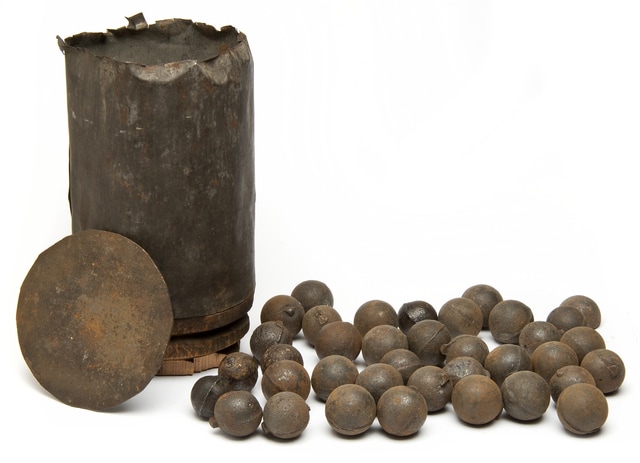Take, for instance, grape. Once, while teaching about the Civil War, I had a 7th grader ask me what was so scary about having grapes shot at you. She honestly believed that cannoneers loaded their guns with the same kind of grapes that make their way into jelly and jam. While this would lead to a sticky situation, and perhaps some stained uniforms, it likely wouldn't lead to many fatalities.
| Grape, when referring to 18th and 19th Century war, is just a shortened form of the word grapeshot. Neither grape or grapeshot refer to shooting people with grapes. Rather, it refers to how small metal balls, or shot, were bundled together before being loaded into the gun. When the gun fired, the bag disintegrated and the shot spread out from the muzzle, much like shot from a shotgun. My students understand this concept better when I ask if any of their parents are hunters. Usually they know the purpose of buck shot (for shooting deer) and birdshot (smaller pellets, for shooting pigeons.) |
Grapeshot was especially effective against amassed infantry movements, such as Pickett's Charge at the Battle of Gettysburg. But by the Civil War, grapeshot was already becoming a thing of the past, replaced by canister.
 By Minnesota Historical Society [CC BY-SA 3.0 (http://creativecommons.org/licenses/by-sa/3.0)], via Wikimedia Commons
By Minnesota Historical Society [CC BY-SA 3.0 (http://creativecommons.org/licenses/by-sa/3.0)], via Wikimedia Commons Canister is a word that is unfamiliar to many middle grade readers, because they are too young to know what a film canister is. They do, however, know what a can is, and can readily accept that can is short for canister.
Jennifer Bohnhoff teaches New Mexico History to 7th grade students in Albuquerque, New Mexico. Her middle grade novel, The Bent Reed, is set at the Battle of Gettysburg. Her next novel, Valverde, is set in New Mexico during the Civil War and is due out this spring.


